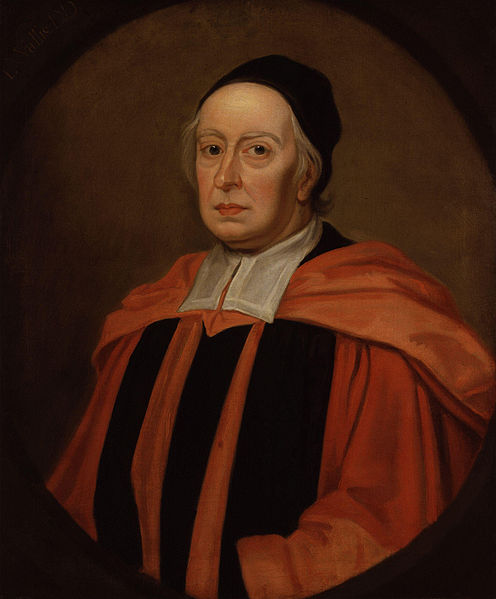<Back to Index>
- Mathematician John Wallis, 1616
- Painter Konstantin Alekseyevich Korovin, 1861
- Prime Minister of Sweden Karl Hjalmar Branting, 1860
PAGE SPONSOR

John Wallis (November 23, 1616 – October 28, 1703) was an English mathematician who is given partial credit for the development of modern calculus. Between 1643 and 1689 he served as chief cryptographer for Parliament and, later, the royal court. He is also credited with introducing the symbol ∞ for infinity. Asteroid 31982 Johnwallis was named after him.
John Brehaut Wallis was born in Ashford, Kent, the third of five children of Reverend John Wallis and Joanna Chapman. He was initially educated at a local Ashford school, but moved to James Movat's school in Tenterden in 1625 following an outbreak of plague. Wallis was first exposed to mathematics in 1631, at Martin Holbeach's school in Felsted; he enjoyed maths, but his study was erratic, since: "mathematics, at that time with us, were scarce looked on as academical studies, but rather mechanical" (Scriba 1970).
As it was intended that he should be a doctor, he was sent in 1632 to Emmanuel College, Cambridge. While there, he kept an act on the doctrine of the circulation of the blood; that was said to have been the first occasion in Europe on which this theory was publicly maintained in a disputation. His interests, however, centered on mathematics. He received his Bachelor of Arts degree in 1637, and a Master's in 1640, afterwards entering the priesthood. From 1643-49, he served as a non-voting scribe at the Westminster Assembly. Wallis was elected to a fellowship at Queens' College, Cambridge in 1644, which he however had to resign following his marriage on 14 March 1645 to Susanna Glyde.
Throughout this time, Wallis had been close to the Parliamentarian party, perhaps as a result of his exposure to Holbeach at Felsted School. He rendered them great practical assistance in deciphering Royalist dispatches. The quality of cryptography at that time was mixed; despite the individual successes of mathematicians such as François Viète, the principles underlying cipher design and analysis were very poorly understood. Most ciphers were ad-hoc methods relying on a secret algorithm, as opposed to systems based on a variable key. Wallis realized that the latter were far more secure — even describing them as "unbreakable", though he was not confident enough in this assertion to encourage revealing cryptographic algorithms. He was also concerned about the use of ciphers by foreign powers; refusing, for example, Gottfried Leibniz's request of 1697 to teach Hanoverian students about cryptography.
Returning to London — he had been made chaplain at St Gabriel Fenchurch, in 1643 — Wallis joined the group of scientists that was later to evolve into the Royal Society. He was finally able to indulge his mathematical interests, mastering William Oughtred's Clavis Mathematicae in a few weeks in 1647. He soon began to write his own treatises, dealing with a wide range of topics, continuing throughout his life.
Wallis joined the moderate Presbyterians in signing the remonstrance against the execution of Charles I, by which he incurred the lasting hostility of the Independents. In spite of their opposition he was appointed in 1649 to be the Savilian Chair of Geometry at Oxford University, where he lived until his death on October 28, 1703. Besides his mathematical works he wrote on theology, logic, English grammar and philosophy, and he was involved in devising a system for teaching deaf-mutes. Although William Holder had earlier taught a deaf man Alexander Popham to speak ‘plainly and distinctly, and with a good and graceful tone’. Wallis later claimed credit for this, leading Holder to accuse Wallis of 'rifling his Neighbours, and adorning himself with their spoyls’.